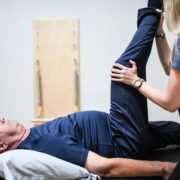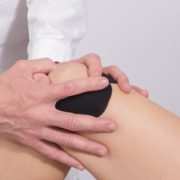5 Tips to Avoid Back Pain While Gardening
Gardening has so many health benefits and it’s an activity many people fall in love with. It gets you outdoors in the fresh air, exposes you to vitamin D, it’s meditative, helps to improve hand-eye coordination, and it’s great exercise. But one thing it’s not always great for is your back. If you love gardening – but cringing about what it might do to your back this Spring – keep reading.
Here are 5 tips to avoid back pain while gardening:
1. Avoid bending from the waist
A common gardening posture I see is folks standing with straight or slightly bent knees and bending over from their waist – creating an “L-shape” with their body. While this posture is acceptable to do from time to time – it’s not a good idea to do this over and over again while gardening. This particular posture puts a lot of strain on your lower back as well as the backs of your knees. Over time, your lower back muscles will become very sore and tight, which can make them susceptible to injury when you least expect it. What to do instead? Get in the habit of squatting and bending from your knees. If you must do a particular gardening activity for a sustained period – try being on all-fours – and switch your hands periodically. These positions are much better for your back and you’ll be able to sustain the activity for much longer.
2. Take frequent breaks
It’s easy to get lost in the activity of planting and weeding. But even if you’re choosing good postures like I mentioned above – your back still needs a break. Our spines do not enjoy being bent forward for prolonged periods and when you do this for too long without taking a break – it puts a lot of stress on the vertebral discs in your spine and makes them more likely to bulge. I recommend setting a timer and giving yourself a break every 30 min. Simply stand up and get out of the bent over posture. Your back will thank you and you’ll be able to garden for much longer without risk of injuring your spine.
3. Pivot instead of twist
One of the most vulnerable positions for your back is the combination of bending and rotating. And when done repetitively, you’re almost guaranteed an injury to your spine. When you’re doing things like digging or planting – activities that have you bending and twisting – you want to pivot instead. Keep your body in line with the activity you’re doing. Don’t rotate or twist from your waist. How do you do this? Make sure your hips are always in line with the object you are moving and maneuvering. Keep your ribs in line with your pelvis and always move them as a unit. While it’s ok to bend and twist from your waist on occasion – you’ll find yourself in some trouble when you do this over and over again – especially if you have a history of back pain episodes happening to you in the past.
4. Use gardening tools wisely
Gardening tools can be of significant help when it comes to maintaining good posture and avoiding overuse of your muscles and joints. When you have to lift something heavy – especially repeatedly – use a wheelbarrow. This valuable gardening tool will allow you to lift and move heavy things with significantly less strain on your back. If you’ve got to be on your knees or squatting a lot – consider using a gardening bench. This will make it easier to sustain activities that require prolonged bending or kneeling. Lastly, use tools with longer handles to help avoid crouched over postures. If you can maintain a more upright posture while gardening, you’ll be able to tolerate it longer and with less back pain.
5. Raise your gardens
Let’s face it, gardening involves bending over and lots of it. Activities like this are just not good for your back when done over and over. Consider modifying your garden to include more raised boxes and beds. This is going to make it so much easier to tend to your plants without having to bend over so much. And when you need to create a work surface – make sure that is raised too. Bending forward isn’t “bad” for your spine – but when you bend all the time without giving your back a break – you’re asking for trouble. Modifying your garden to make it more ergonomic can make a huge difference in the health of your spine.
Gardening has so many positive benefits – and the last thing I want is for back pain to be the thing that stops you from doing something you love. Hopefully these tips give you some important things to consider – and more importantly – help you look at gardening as something enjoyable again versus something you dread because of your back.
Do you have nagging back pain that gets in the way of your everyday activities? Request to talk to one of my specialists to see if we would be the right fit to help you get out of pain. CLICK HERE to request a Free Discovery with one of my specialists.
Dr. Carrie Jose, Physical Therapist and Pilates expert, owns CJ Physical Therapy & Pilates in Portsmouth, NH. To get a free copy of her guide to taking care of back pain – click here.




